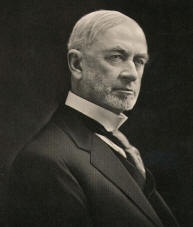
A Brief History of Nibley City
Cache Valley was occupied by the Shoshone Indians prior to it’s settlement by Mormon Pioneers. Trappers arrived in Cache Valley in 1824 under the leadership of John Weber of the Rocky Mountain Fur Company. Several trapping companies operated in the valley during the next 20 years. During that time, the beaver and bison were virtually eliminated.
 In 1849, the valley was surveyed by the U.S. Army Corps of Topographical Engineers. Reports of Cache Valley’s abundant range and beautiful setting were conveyed to Brigham Young by army officers, trappers, and Mormon scouts. In 1855, the Utah Territorial Legislature granted Cache Valley to Brigham Young as a herd ground for his increasing numbers of cattle. A company of cattle owners was organized to take cattle to Cache Valley under the direction of Briant Stringham. The site they chose was located near the Blacksmith Fork River by some springs about a mile northwest of the Nibley Ward Chapel on Main Street and 3200 South. The ranch they established was named the Elk Horn Ranch and became the first Mormon settlement in the valley.
In 1849, the valley was surveyed by the U.S. Army Corps of Topographical Engineers. Reports of Cache Valley’s abundant range and beautiful setting were conveyed to Brigham Young by army officers, trappers, and Mormon scouts. In 1855, the Utah Territorial Legislature granted Cache Valley to Brigham Young as a herd ground for his increasing numbers of cattle. A company of cattle owners was organized to take cattle to Cache Valley under the direction of Briant Stringham. The site they chose was located near the Blacksmith Fork River by some springs about a mile northwest of the Nibley Ward Chapel on Main Street and 3200 South. The ranch they established was named the Elk Horn Ranch and became the first Mormon settlement in the valley.
A severe Winter forced abandonment of most of this early settlement, except for a few settlers. Those left at the ranch suffered during this severe winter as food became dangerously low. When Spring came, barley was planted. This venture, like the ranching, was also unsuccessful.
As settlers continued to enter Cache Valley, relations with the Shoshone deteriorated. Although little physical contact occurred, theft of stock and grain was commonplace. Tight settlement patterns were encouraged to help provide security for these early settlers.
In 1860, settlers at and near Elk Horn Ranch were advised to move to the East side of the Blacksmith Fork River where they would be safer in the event of an Indian attack. Serious threats from Indians ended in 1863 when a major battle was fought in Northern Cache Valley. In the 1870’s, the remaining Indians were forced to enter reservations.
Shortly after those early settlers gathered on the East side of the Blacksmith Fork River, the Millville Ward was organized. Once the Indian threat had diminished, some of the settlers moved back to the West side of the river to what was called West Millville. A variety of activities were operated in this area, including a blacksmith shop, a molasses and grain mill, a general merchandise store, a slaughter house, a dairy and a nursery.
Water for the settlers in Millville Ward was supplied by the Millville Water Works Company. In 1915, as the population continued to grow, the company found it’s water supply inadequate and began to search for additional sources. Yeates Springs, located near the Blacksmith Fork River on the Southern boundary of present day Nibley, was selected and purchased from John Yeates for $500.00. From these springs, 28,000 feet of redwood pipe was laid along the county road to service residents living west of the river. The system was paid for by selling stocks to those receivers for $262.50 per share.
 In 1920, the Millville Ward was divided. That area west of the river was Nibley Ward, named after Charles Wilson Nibley, presiding Bishop of the Church of Jesus Christ of Latter-Day Saints in 1907.
In 1920, the Millville Ward was divided. That area west of the river was Nibley Ward, named after Charles Wilson Nibley, presiding Bishop of the Church of Jesus Christ of Latter-Day Saints in 1907.
Nibley precinct was created in 1925 as a separate political entity by the Cache County Commissioners. In 1926, repairs were begun to replace leaking water pipelines. Also, at this time, a ward chapel was built in Nibley.
In 1933, the Millville Public Works Company applied to the Public Works Administration (PWA) for a $2,500.00 loan to replace existing water pipelines. The loan was refused on grounds that the PWA did not make loans to private companies. Since loans to incorporated towns were permissible, the stockholders voted to dissolve the company and turn the water system over to the town of Millville. Consideration was also given to having Nibley incorporate as a town.
On May 21st, 1935, a mass meeting was called to discuss the incorporation of Nibley. A motion was made “that we do incorporate so as to be eligible to take over the water works and get the government grant.” The motion passed and town boundaries were drawn up which included all members of the Nibley Ward and extended 20 rods on both sides of all included roads. A petition was presented to the Cache County Board of Commissioners and on August 30th, 1935, Nibley was incorporated. Today, Nibley has grown to a population of about 9,000.
